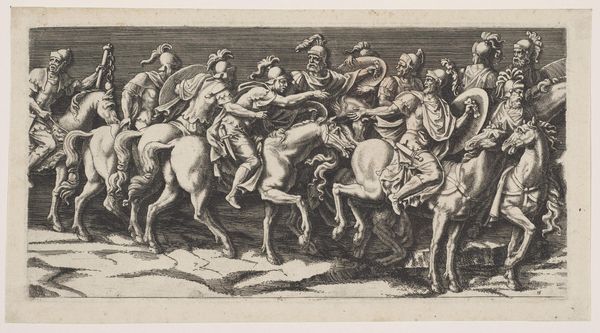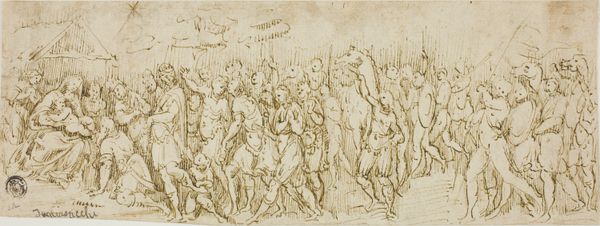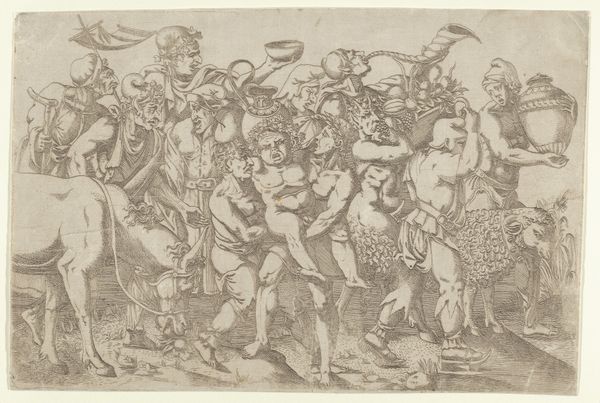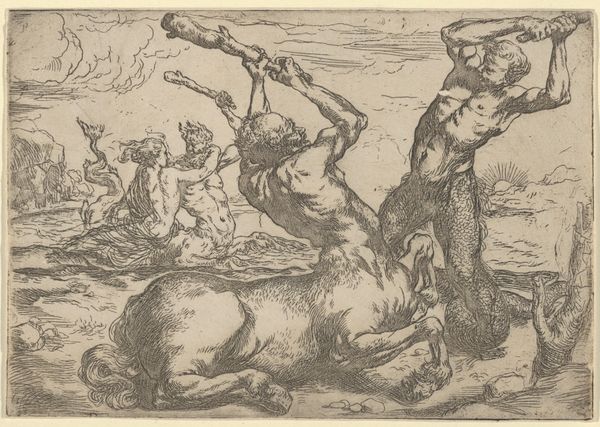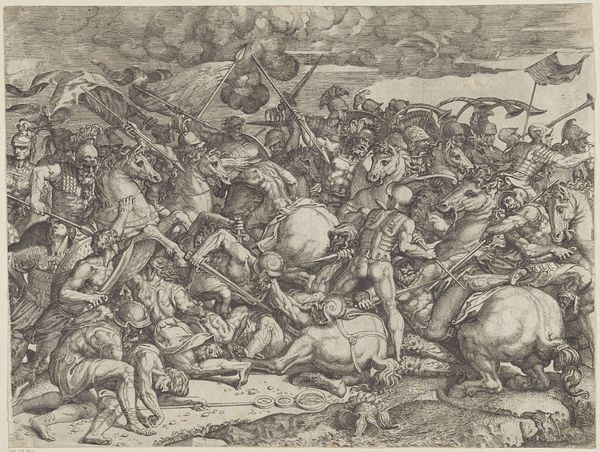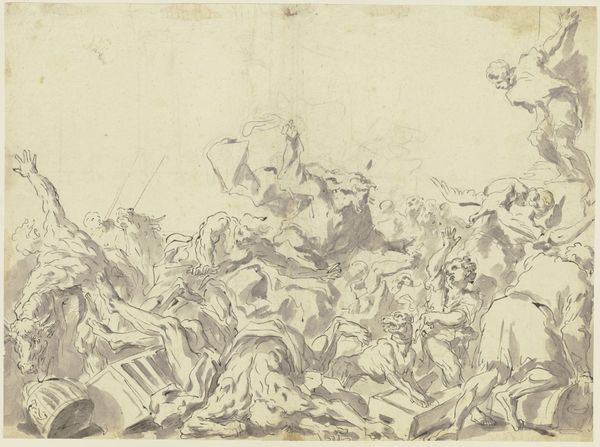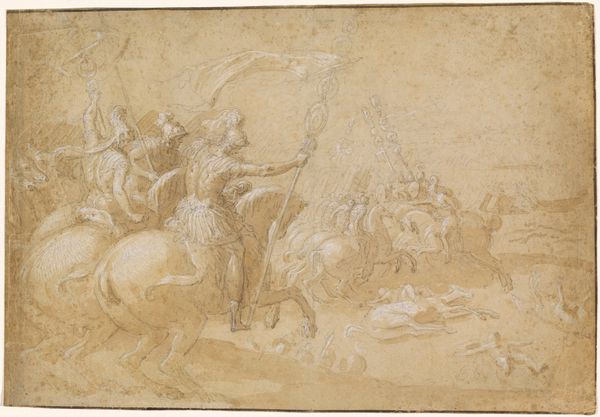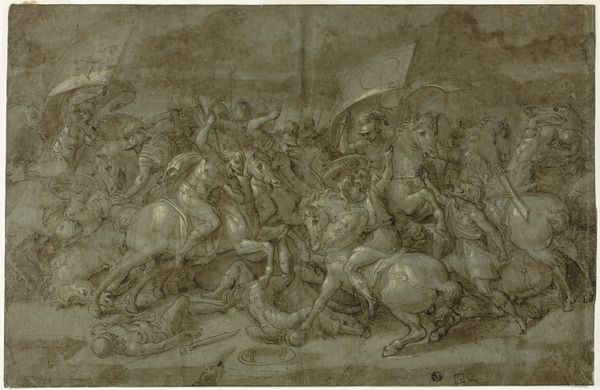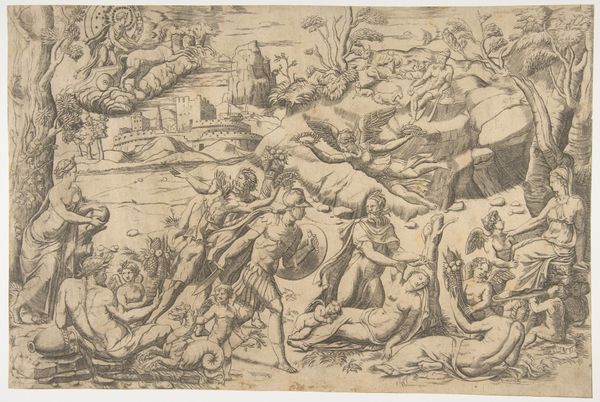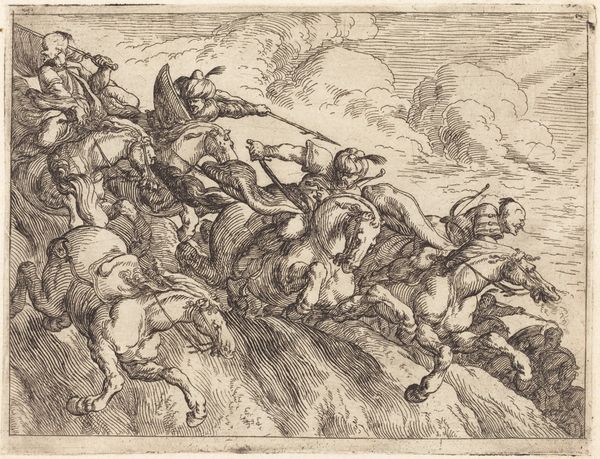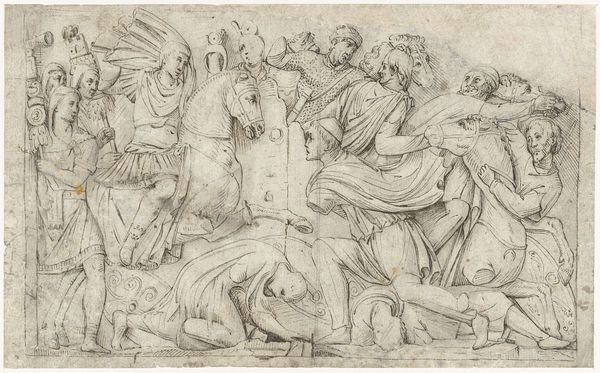
drawing, ink
#
portrait
#
drawing
#
ink drawing
#
mannerism
#
figuration
#
11_renaissance
#
ink
#
group-portraits
#
genre-painting
#
history-painting
Dimensions: height 250 mm, width 391 mm
Copyright: Rijks Museum: Open Domain
Curator: This ink drawing, "Groep Romeinse ruiters te paard," or "Group of Roman Horsemen," is attributed to Antonio Fantuzzi and dates from sometime between 1537 and 1550. What strikes you initially about this piece? Editor: A whirlwind of activity, almost chaotic. The layering of figures on horseback, the frantic gestures, and the rough texture created by the ink itself. It’s raw and energetic. Curator: Indeed. The composition is quite dynamic. Note how Fantuzzi uses a complex layering of forms to create depth and movement, typical of the Mannerist style. The figures, while detailed, are also somewhat elongated and stylized, disrupting classical proportions. Editor: I’m curious about the practical side. What kind of paper was he working on, and what specific type of ink allowed for these subtle gradations of tone and intricate lines? Was this preparatory work for something larger, or was it an end in itself? Curator: Given Fantuzzi’s connection to the School of Fontainebleau, and its decorative programs, the drawing likely functioned as a design source for prints or other reproducible media. We can read into the classical armour and gestures to posit potential use as studies for history paintings. Editor: Right, the context. Looking closely, it seems there's a deliberate crudeness. Not incompetence, but perhaps an embracing of the imperfections inherent in the materials themselves—the blotches and uneven lines add to the sense of immediacy. Curator: Precisely. It subverts expectations of perfect finish. He also creates a tension between naturalism and stylization that is typical for this period, emphasizing the role of disegno – artistic design— over pure imitation of nature. The drawing, while evocative, remains a designed and mediated object. Editor: Which brings me back to my interest in how something like this was used in production – were multiple artisans involved? Was the image directly transferred, and what changes occurred across this process? Curator: Interesting questions! Food for further thought. Well, hopefully we have encouraged visitors to consider the artistic qualities and background of "Group of Roman Horsemen" in fresh ways today. Editor: Indeed, by exploring its texture and techniques as part of wider artistic production!
Comments
No comments
Be the first to comment and join the conversation on the ultimate creative platform.

